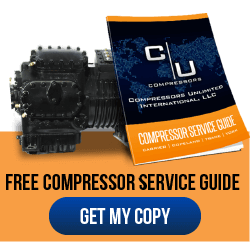HVAC maintenance is one of the most overlooked areas of building maintenance and energy management. Property managers and business owners alike tend to forget about the importance of changing filters on a regular basis, not realizing how much damage can be caused by allowing your system to get clogged up. If you’re ready to start saving money and protecting your HVAC system, you need a strict maintenance schedule in place. Here’s how to make it happen:
Gather Your Team
Before you can implement a successful commercial HVAC maintenance schedule, you must be sure that you have all parties on board. Too often we find that management tries to cut costs by not performing maintenance, only costing themselves more in repairs and energy bills in the long run. Make sure that your maintenance team, management team and all other affected parties are on the same page when it comes to purchasing filters, having them installed, and performing other regular maintenance duties.
Conduct a System Analysis
In order to make your maintenance schedule, you will need to know exactly what kind of equipment you have in your facility, and what the manufacturer recommends for maintenance intervals. Gather all of this data together to figure out how you can combine tasks and simplify things. It is also useful to note the location of each system, how to access it and any other important information about how to turn the system on or off in a pinch. Whoever will be in charge of maintenance will want to have a complete picture of the systems. This is also a good time to do a complete system inspection to establish a baseline for where your system is at today.
Make a Checklist
Finally, write out a checklist that will be used to verify that all maintenance has been conducted in a timely manner. You can break this up into weekly, monthly, quarterly or annual tasks that need to be done in each part of your system. Your checklist should include important tasks like changing the filters, cleaning the coils, clearing the drain lines, and ongoing visual inspections of all belts and the surrounding area. With the help of your checklist you can be sure to hit all the major components on a regular rotation, and document that the inspection was done on time. You don’t want inspections being skipped or put off to a later date when your system could be suffering.
Compressor Maintenance
The compressor is arguably the most complex part of your HVAC system. Keeping it in good shape should be your highest priority. While all of the other maintenance items on your list may seem simple, you need to be sure that extra attention is paid to your compressor. This includes checking the lubricant to make sure it is clean and full and changing the lubricant approximately every three to six months depending on manufacturer recommendations. In addition, you will want to inspect for air leaks in and around the compressor and listen for signs of damage to internal components. You also need to check out your pressure relief valves and make sure they are functioning properly in case anything ever causes your system to overload. Occasionally, you should also inspect for signs of loose bolts or other hardware that could be floating around. Make sure to inspect your power supply for any signs of wear or damage as well.
Creating a strict HVAC maintenance schedule does not have to be difficult, but you must have a complete buy-in from all parties involved to ensure that it gets done long term. The more detailed your analysis and checklist are, the more likely you are to have a healthy system for years to come. For more information, contact Compressors Unlimited today and speak with our HVAC experts about how to properly care for your systems.












